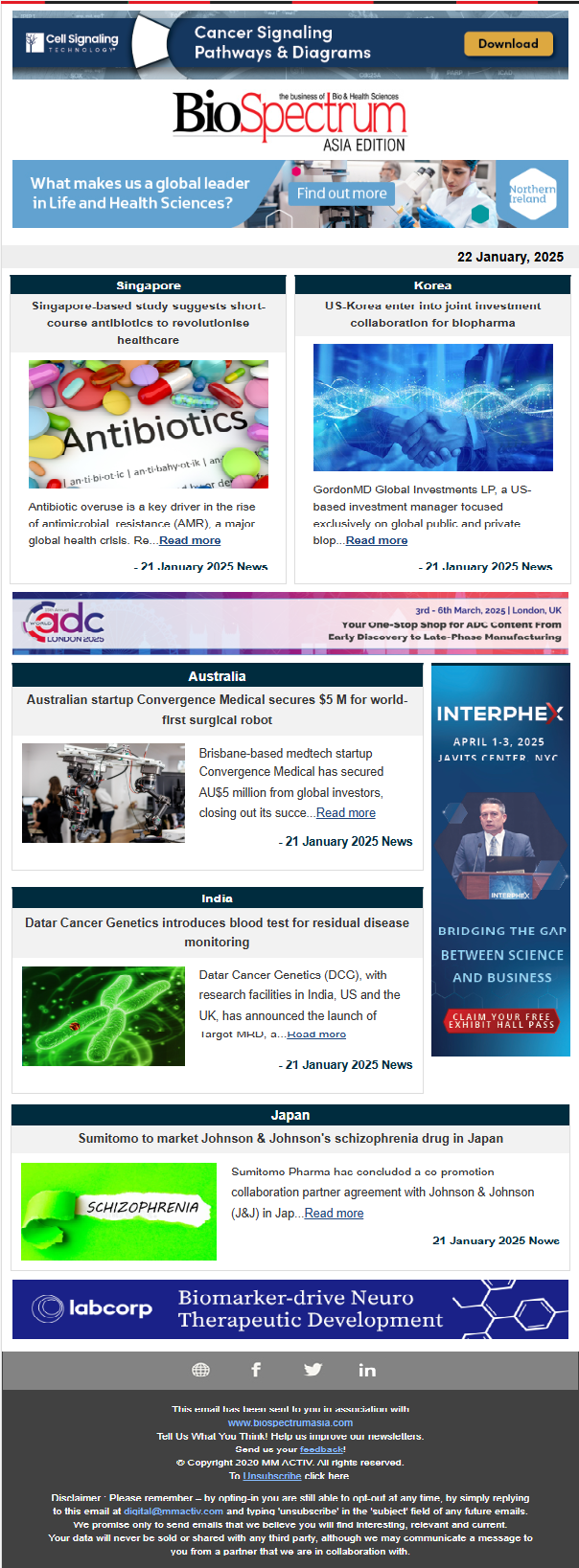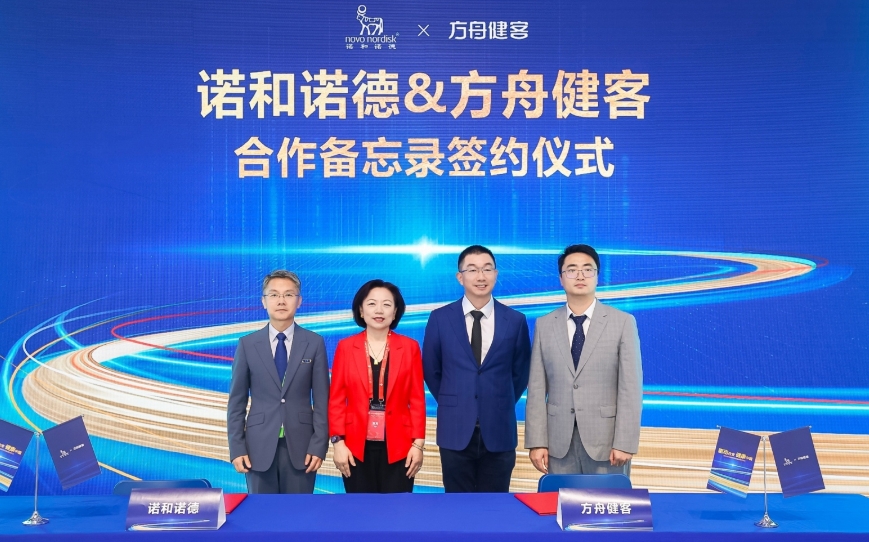
Global Type 2 Diabetes Therapeutics market is forecast to grow at 7.15 percent CAGR over the period 2014-2019
Singapore: BioSpectrum is taking a look at the future of pharma markets across APAC
Oncology
Cancer, with a death toll exceeding that of AIDS (Acquired Immune Deficiency Syndrome), tuberculosis and malaria collectively, accounted for 8.3 million deaths in 2013. With a skyrocketing incidence of 469.6 per 100,000 in the US alone, the oncology market is poised to grow at a substantial CAGR of around seven percent to $109 billion by 2020. Source: ABMRG
The total global annual market for next generation cancer diagnostics was $776 million in 2010, and is growing at a CAGR of 47 percent, to reach a forecast market size of $5.3 billion in 2015. Source: BCC Research
Registering a CAGR of 14.60 percent from 2011 to 2018, the market for oncology biomarkers was valued at $13.16 billion in 2011 and is expected to be worth $29.78 billion in 2018. As cancer gains wide-spread prevalence across the globe, there has also been a simultaneous rise in the trend of personalized medicine. Cancer biomarkers are injected in the body to help diagnosis, prognosis, and epidemiology. They are used to check the response of the body to a treatment or condition. Source: Transparency market research
Breast Cancer Drug
The increased use of targeted therapies, along with a greater uptake of branded drugs and rising incidence population, will lead the breast cancer therapeutics market value to grow from $9.2 billion in 2013 to $13.1 billion by 2020.
The key targeted therapies include Roche's Perjeta and trastuzumab-DM1, Eisai's Halaven, Novartis' Afinitor, Pfizer's palbociclib and neratinib, and Boehringer Ingelheim's afatinib. The approval of Roche's Kadcyla, a biobetter of Herceptin, for metastatic breast cancer in 2013 has also advanced the standard of care in this market. Breast cancer pipeline is robust with potential drug candidates in various phases of clinical development. From a total of 612 active progressing pipeline molecules, 259 (42 percent) are in the preclinical stage of development, 100 (16 percent) are in Phase I, 130 (21 percent) are in Phase II and 52 (8 percent) are in Phase III of clinical trials.
Source: GBI Research
Colorectal Cancer Therapeutics
Colorectal Cancer (CRC) therapeutics market in Asia-Pacific (APAC) is set to increase in value, from $1.9 billion in 2013 to $2.9 billion by 2020, at a CAGR of 6.5 percent. Market expansion in India, Australia, China, and Japan will be driven by the increasing incident population and higher uptake of branded drugs and targeted therapies. The moderate uptake of late-stage pipeline products panitumumab and Xilonix, following their expected approvals between 2016 and 2018, will help boost the market.
However, the impressive growth in the APAC CRC therapeutics market will be prevented by a significant rise in patent expirations, including those for Erbitux and Avastin in Japan during 2016 and 2020, respectively. This will create a substantial opportunity for generic and biosimilar manufacturers.
Source: GBI Research
Melanoma Therapeutics
Global melanoma therapeutics market was valued at $1.3 billion in 2013 and will expand at a CAGR of 15.4 percent to reach $3.6 billion by 2020. Majority of the increase, which relates to eight major countries (US, Canada, Germany, France, Italy, Spain, the UK, and Japan), will occur in the US, where the market value will rise from approximately $1 billion in 2013 to $2.6 billion by the end of the forecast period. The fastest growth will occur in Japan, where the melanoma treatment market will increase at a CAGR of 25.8 percent from $2.8 million in 2013 to $14.2 million by 2020.
Source: GBI Research
Stem Cell Therapies
There are around 104 stem cell programs in late-stage clinical development, paving way for a market shift towards stem cell-based therapy applications by 2017. Based on clinical trial timelines, stem cells could reach the commercialization threshold in the next few years. The number of clinical trials has also picked up, and currently, the top 20 developmental candidates are undergoing a total of 170 clinical trials across a range of different therapy areas and indications. Despite high rates of clinical failure in emerging biotechnologies, the number of therapeutic candidates under investigation indicates the market potential for a raft of new therapies emerging from the stem cell sector for areas with high unmet need such as those involving tissue regeneration. Source: GlobalData
Global stem cell market earned revenues of $40.01 billion in 2013 and is estimated to nearly triple to $117.66 billion in 2018 at a CAGR of 24.1 percent. While North America is the market leader with more than half of the global stem cell market share, the Asia-Pacific is expected to record the highest growth rate. APAC stem cell market, which was valued at $5.60 billion in 2013, is projected to increase to $18.71 billion by 2018. Source: Frost & Sullivan
Dengue Vaccine
Dengue vaccine market is estimated to grow from $70 million in 2015 to $400 million by 2020, at a Compound Annual Growth Rate (CAGR) of 42 percent contributed mostly by Brazil, India, Mexico, Singapore, and Thailand. Clinical and commercial positioning of live-attenuated dengue vaccines, led by Sanofi's CYD-TDV and Takeda's DENVax, would facilitate their market dominance. The rapid uptake of dengue vaccines will be driven primarily by the inclusion of live-attenuated vaccines in national immunization programs.
Source: GlobalData
Self-Monitoring of Blood Glucose
APAC Self Monitoring of Blood Glucose (SMBG) market earned $222.7 million in 2012 market and is expected to reach $358.7 million in 2017. The strip segment earned revenues of $1212.7 million 2012 and expects this to grow to $2081.2 million in 2017.
Not even 10 percent of the diabetic population in Asia-Pacific use SMBG products due to inadequate education and awareness, as well as a lack of affordability and strict regulations. To improve patient awareness, SMBG original equipment manufacturers (OEMs), several governmental and non-governmental organizations, and hospitals need to conduct patient awareness camps and drives throughout the year.
Source: Frost & Sullivan
Infectious Disease Diagnostics
Global infectious disease diagnostics market earned revenue of $7.91 billion in 2013 and is estimated to reach $12.77 billion in 2018 driven by diseases including hepatitis B, hepatitis C, tuberculosis, and sepsis tests.
Molecular diagnostics is growing the fastest among the infectious disease market segments, clocking a compound annual growth of 15.30 percent, due to efficient and accurate result. Molecular methods and immunodiagnostics are expected to complement each other as the need for accurate and rapid diagnostic tests rises.
Source: Frost & Sullivan
Cardiovascular Information and Imaging solution
Cardiovascular information and imaging solution market in Asia was valued at $17.9 million in 2013 and is expected to reach a CAGR of 8.4 percent from 2014 to 2019. Asia accounted for a market share of 12.3 percent of global CVIS market in 2013. The government support for the development of healthcare IT solutions and growing medical tourism in the Asian countries are among the major factors that are likely to drive the growth of this market. The growing medical tourism will increase the flow of patients to hospitals, especially in the cardiac department, owing to the increasing flow of patients. With the growing workload, an efficient system is required to streamline and manage the workflow efficiently, and this boosts the CVIS market in the Asian region.
Source: MicroMarket Monitor
Type 2 Diabetes
Global Type 2 Diabetes Therapeutics market is forecast to grow at 7.15 percent CAGR over the period 2014-2019 and the value of type 2 diabetes market in Asia-Pacific is expected to increase from $6.5 billion in 2013 to $10.5 billion in 2020 at a CAGR of 7.1 percent. Among the four APAC type 2 diabetes markets, Japan has the highest market share of 51 percent followed by China with 30 percent and India with 14 percent. In a best-case scenario, the total market size is expected to grow at a CAGR of 8.1 percent to $11.2 billion by the end of 2020, while in a worst-case scenario it is expected to grow at a slower CAGR of 6.6 percent to $10.2 billion by the end of 2020.
Source: ReportsnReports.com




